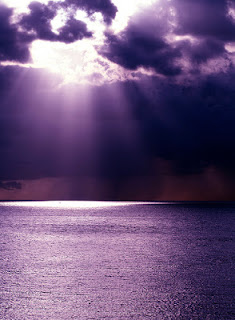UMA PEQUENA COLEÇÃO DE REPRESENTAÇÕES DO SOL: FOTOS, DESENHOS, GIFS, PINTURAS, VIDEOS, MÚSICAS, ETC. A maioria das imagens foi capturada na internet. Algumas foram modificadas outras são de minha autoria. Se alguma tiver direitos autorais registrados, por favor, avise-me e ela será retirada imediatamente. I do not claim authorship or ownership to any of these images. I just really like them. To my knowledge all photos are in the public domain. If you think otherwise, let me know.
sexta-feira, 29 de junho de 2012
terça-feira, 26 de junho de 2012
SUNSPOT
This is how a sunspot really looks, in the most detailed picture of the surface of the sun yet. Hola, Señor Sauron! The photo, which was taken on July 2 by New Jersey Institute of Technology’s Professor Philip R. Good and the Big Bear Solar Observatory team, shows a sun spot at about 3600ºC, surrounded by a mosaic of hell burning at 5800ºC. The BBSO is 5.25-feet in diameter and will be able to resolve sun details as small as 45 kilometers in optimal conditions. The image itself shows details measuring 0.09 arcseconds, which is about 65 kilometers (about 40 miles).
segunda-feira, 25 de junho de 2012
terça-feira, 19 de junho de 2012
domingo, 17 de junho de 2012
sábado, 16 de junho de 2012
sexta-feira, 15 de junho de 2012
terça-feira, 12 de junho de 2012
segunda-feira, 11 de junho de 2012
sábado, 9 de junho de 2012
sexta-feira, 8 de junho de 2012
quarta-feira, 6 de junho de 2012
Johannes Kepler (1571-1630) foi um astrônomo, matemático e astrólogo alemão. Responsável por uma grande revolução na ciência, elaborou as leis da mecânica celeste. Aperfeiçoou invenções de Galileu Galilei e teve grande influência nas descobertas de Isaac Newton
Aristarco de Samos, astrônomo grego (310 a.C. - 230 a.C.) foi o primeiro cientista a propor que a Terra gira em torno do Sol (sistema heliocêntrico) e que a Terra possui movimento de rotação. Por tal afirmação, foi acusado de impiedade por Cleanto, o Estóico.
Fonte: http://pt.wikipedia.org/wiki/Aristarco_de_Samos
Fonte: http://pt.wikipedia.org/wiki/Aristarco_de_Samos
Nicolau Copérnico
(1473 - 1543)
Nicolau Copérnico foi um polaco, nascido na cidade de Torun, no dia 19 de Fevereiro de 1473. Afirmou-se como astrónomo e matemático e ficou conhecido por desenvolver a teoria heliocêntrica do Sistema Solar. Foi também cónego da Igreja Católica, governador e administrador, jurista, astrólogo e médico.
A sua teoria do Heliocentrismo, que colocou o Sol como o centro do Sistema Solar, contrariando a então vigente teoria geocêntrica (que considerava, a Terra como o centro), é considerada uma das mais importantes hipóteses científicas de todos os tempos, tendo constituído o ponto de partida da astronomia moderna. A teoria copernicana permitiu também a emancipação da cosmologia em relação à teologia.
Transito de Venus em 5 de junho de 2012
Publicado em 06/06/2012 por apolochannel
O vídeo mostra o trânsito de Vênus na frente do disco solar. O evento foi transmitido ao vivo pelo Apolo11.com, que retransmite a NASA-TV. O tempo total do trânsito foi de cerca de sete horas, mas foi aqui compactado em 1 minuto. O trânsito foi registrado pelo telescópio solar em Mauna Kea, no Havaí.
segunda-feira, 4 de junho de 2012
Glorious colorized sunset (by RosemarInTheseTimes)
SOURCE: NASA SDO
SPECTACULAR EXPLOSION: Magnetic fields on the sun's northeastern limb erupted around 17:45 UT on April 16th, producing one of the most visually-spectacular explosions in years. NASA's Solar Dynamics Observatory recorded the blast at extreme ultraviolet wavelengths.
The explosion, which registered M1.7 on the Richter Scale of solar flares, was not Earth-directed. A CME produced by the blast is likely to hit NASA's STEREO-B spacecraft, but probably no planets.
This event confirms suspicions that an active region of significance is rotating onto the Earth-facing side of the sun. Stay tuned for updates.
FAIR USE NOTICE: These pages/video may contain copyrighted (© ) material the use of which has not always been specifically authorized by the copyright owner. Such material is made available to advance understanding of ecological, POLITICAL, HUMAN RIGHTS, economic, DEMOCRACY, scientific, MORAL, ETHICAL, and SOCIAL JUSTICE ISSUES, etc. It is believed that this constitutes a 'fair use' of any such copyrighted material as provided for in section 107 of the US Copyright Law. In accordance with Title 17 U.S.C. Section 107, this material is distributed without profit to those who have expressed a prior general interest in receiving similar information for research and educational.
NASA - Incandescent sun
This video takes SDO images and applies additional processing to enhance the structures visible. While there is no scientific value to this processing, it does result in a beautiful, new way of looking at the sun. The original frames are in the 171 Angstrom wavelength of extreme ultraviolet which shows plasma at around 600,000 Kelvin. The video covers 24 hours of activity on September 25, 2011.
domingo, 3 de junho de 2012
1922 Albert Einstein (German theoretical physicist, 1879-1955) lecturing on relativity, Paris, France
sábado, 2 de junho de 2012
Assinar:
Postagens (Atom)

































